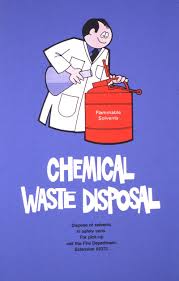
Chemical Safety & Handling
A Chemical Safety & Handling Awareness Course should be designed to provide comprehensive and practical knowledge about the safe use of chemicals in the workplace. Below is a suggested course content outline:
1. Introduction to Chemical Safety
- Importance of chemical safety in the workplace
- Overview of common chemical hazards
- Objectives of the training program
2. Understanding Chemicals and Their Hazards
- Types of hazardous chemicals (e.g., corrosive, flammable, toxic, reactive)
- Routes of exposure (inhalation, skin contact, ingestion, injection)
- Acute vs. chronic health effects
- Examples of workplace chemical accidents and their consequences
3. Chemical Labeling and Safety Data Sheets (SDS)
- Global Harmonized System (GHS): Hazard symbols, signal words, and precautionary statements
- Understanding and interpreting Safety Data Sheets (SDS)
- Key sections of an SDS (e.g., composition, handling, emergency measures)
4. Personal Protective Equipment (PPE)
- Types of PPE for chemical safety (e.g., gloves, goggles, respirators, aprons)
- Proper selection, use, and maintenance of PPE
- Limitations of PPE in chemical handling
5. Safe Chemical Handling Practices
- Guidelines for handling, transferring, and transporting chemicals safely
- Importance of using proper tools and equipment
- Preventing spills, leaks, and accidental mixing of incompatible substances
6. Chemical Storage and Inventory Management
- Proper storage methods (e.g., segregation, temperature control)
- Labeling and inventory control
- Avoiding chemical reactions through proper organization and handling
7. Emergency Preparedness and Response
- Recognizing chemical exposure symptoms
- Steps to take during spills, leaks, or accidental exposure
- Spill containment techniques and emergency equipment (e.g., eyewash stations, absorbent materials)
- Importance of reporting and documenting incidents
8. Environmental Impacts and Waste Management
- Proper disposal of chemical waste
- Reducing environmental contamination through safe practices
- Compliance with environmental regulations (e.g., EPA standards)
9. Legal and Regulatory Requirements
- Overview of applicable laws and standards (e.g., OSHA, REACH, CLP, EPA regulations)
- Employer and employee responsibilities for chemical safety
- Record-keeping and documentation requirements
10. Risk Assessment and Hazard Control
- Identifying and evaluating chemical hazards in the workplace
- Implementing controls to reduce risk (e.g., engineering controls, administrative measures)
- Conducting regular risk assessments and inspections
11. Practical Scenarios and Case Studies
- Hands-on demonstrations for safe chemical handling and storage
- Interactive exercises to identify hazards and suggest controls
- Real-world case studies of chemical accidents and lessons learned
12. Course Review and Assessment
- Recap of key concepts
- Participant Q&A session
- Knowledge assessment through quizzes or tests
- Feedback and course evaluation

Benefits
A Chemical Safety & Handling Awareness Course offers several benefits, particularly in environments where hazardous chemicals are used or stored. These benefits apply to both employees and organizations:
1. Enhances Workplace Safety
- Educates employees about the safe handling, storage, and disposal of chemicals.
- Minimizes risks of accidents such as spills, explosions, or exposure to toxic substances.
2. Reduces Health Risks
- Raises awareness about the potential health effects of chemicals, including short-term (e.g., burns, inhalation issues) and long-term (e.g., cancer, organ damage) risks.
- Promotes the use of personal protective equipment (PPE) to prevent exposure.
3. Supports Regulatory Compliance
- Ensures awareness of legal and regulatory requirements (e.g., OSHA, REACH, CLP regulations).
- Helps organizations avoid penalties, fines, or legal actions due to non-compliance.
4. Prevents Environmental Damage
- Teaches proper chemical disposal methods to prevent pollution of soil, water, or air.
- Promotes sustainable practices and environmental stewardship in handling hazardous materials.
5. Improves Emergency Preparedness
- Provides knowledge on how to respond to chemical spills, leaks, or other emergencies.
- Reduces panic during incidents by teaching proper containment and mitigation techniques.
6. Increases Employee Confidence
- Builds employees’ confidence in handling hazardous substances safely and efficiently.
- Encourages proactive behavior in identifying and mitigating chemical hazards.
7. Reduces Financial Losses
- Minimizes costs associated with accidents, medical treatments, legal claims, and damage to equipment or property.
- Improves overall operational efficiency by reducing chemical-related incidents.
8. Fosters a Culture of Safety
- Encourages employees to adopt safe work practices as a habit.
- Promotes teamwork and accountability in maintaining a safe workplace.
9. Improves Hazard Communication
- Educates participants about Safety Data Sheets (SDS) and chemical labeling systems (e.g., GHS).
- Ensures employees understand chemical hazard symbols, warnings, and instructions.
10. Boosts Organizational Reputation
- Demonstrates a commitment to health, safety, and environmental responsibility.
- Builds trust with clients, stakeholders, and regulatory bodies by maintaining high safety standards.
.png)



